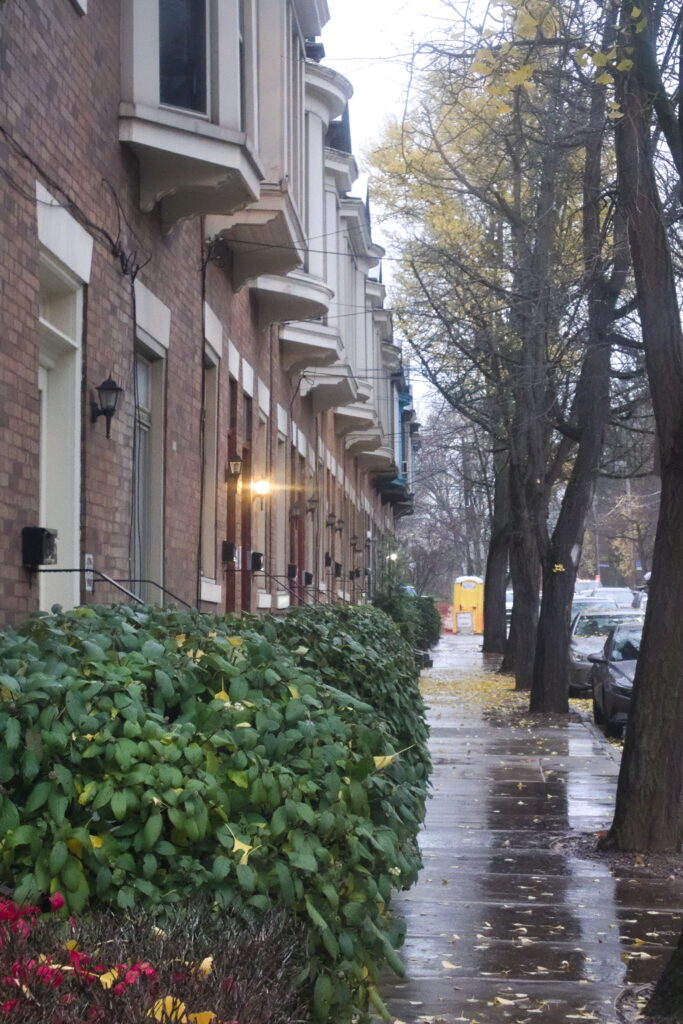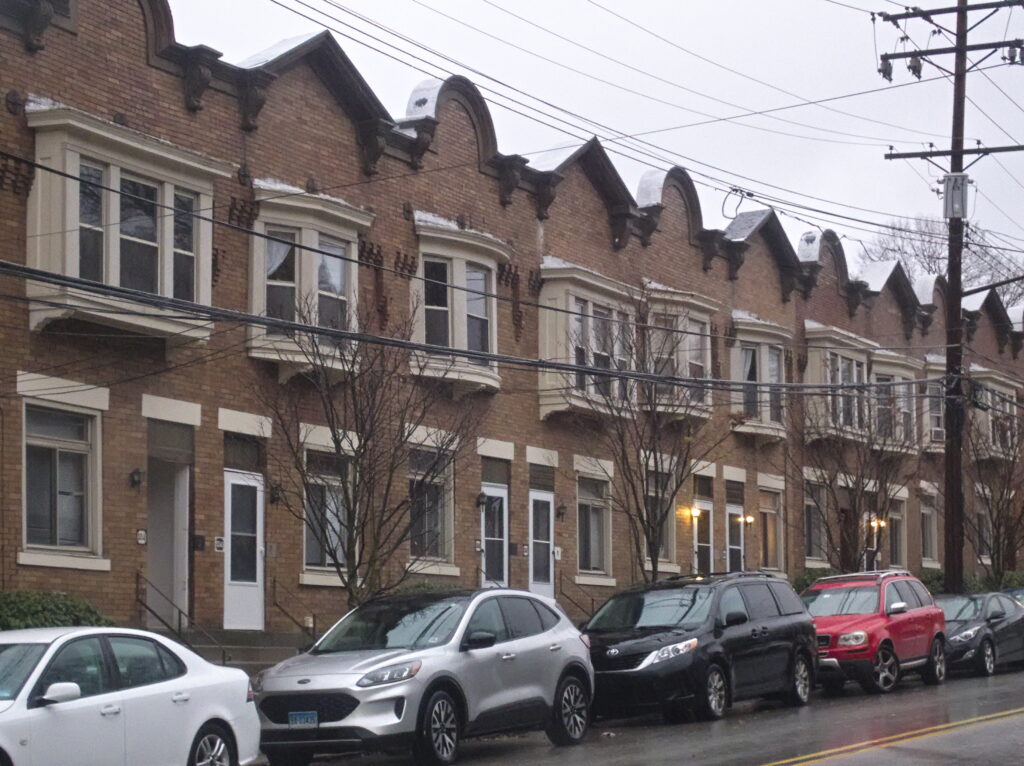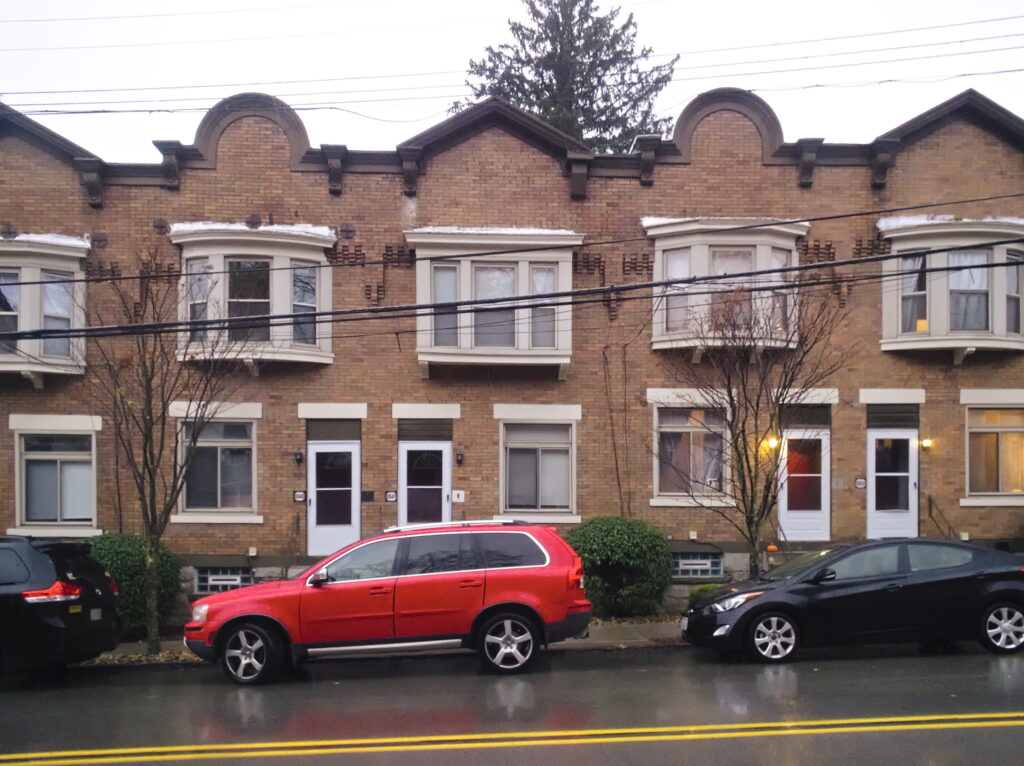
These two long rows of houses where Beeler Street meets Wilkins Avenue make a striking impression now, but they must have been more striking when they were built in the early 1900s. For several years they sat out in the farmlands of Squirrel Hill, forming a strange urban island (along with two rows of three houses across Beeler Street) in the midst of the otherwise rural East End. We caught them on a dim and rainy evening.


Note how the rhythm of the houses is made more interestingly varied by alternating the peaked and rounded fronts but running the oriels in a series of three.

























































